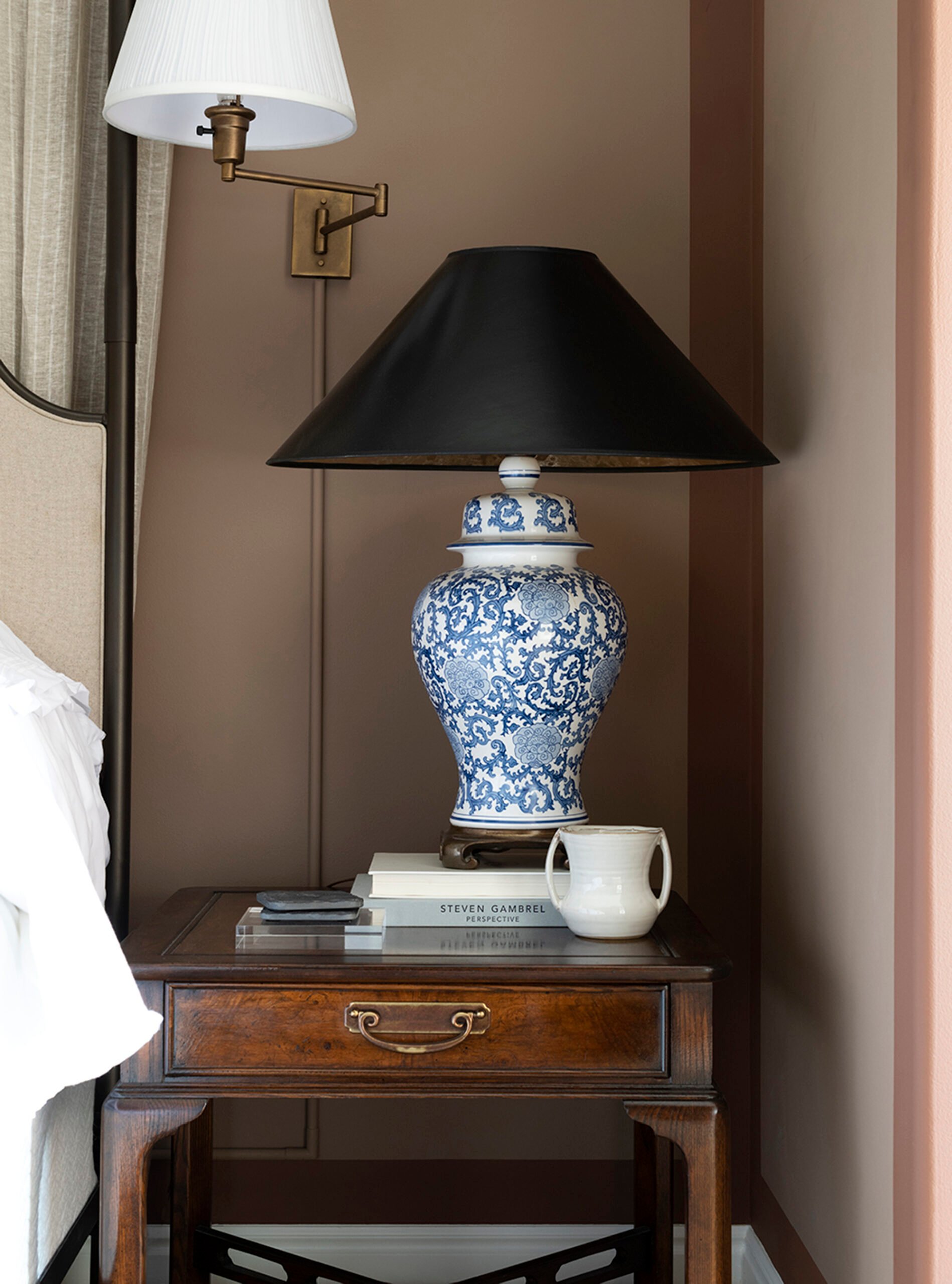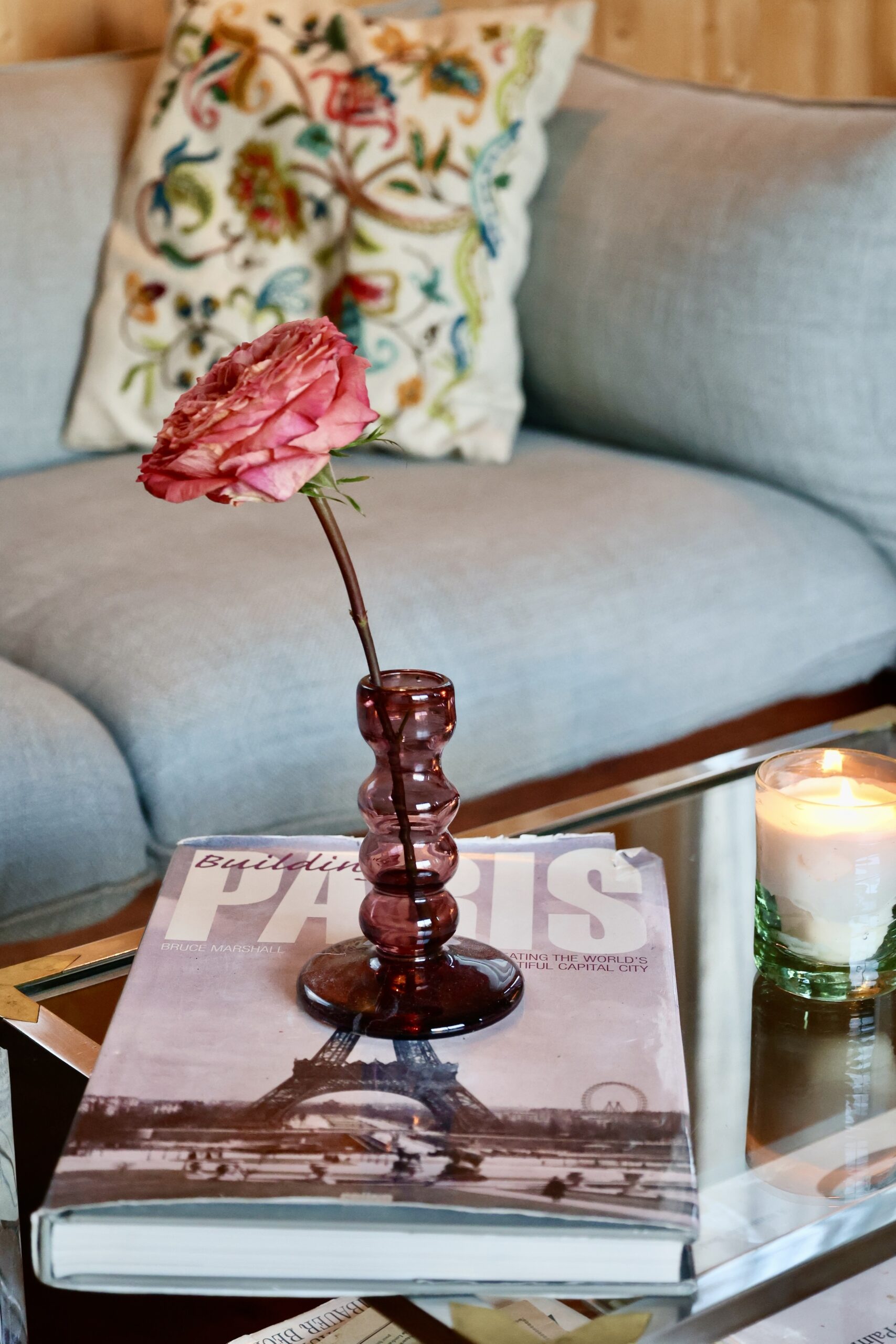After sharing our guest bedroom sconce makeover, I was reminded just how often I get questions about hiding cords and what to do them. I get it! Plug-in lights can be convenient, but exposed cords can really detract from an otherwise aesthetically pleasing setup. Since it’s been a while since I’ve shared the full tutorial, I figured it was time for a dedicated post. I’ll walk you through the quick tutorial with my preferred solution- it takes less than five minutes. Remember friends, good design really does include the little details!
This is something Emmett and I have been doing since our very first renovation, and it’s still part of our process today. If we’re not hardwiring a light fixture, we always conceal the cord. It’s quick, easy, and makes all the difference.
Why We Conceal Cords
We started using this method over a decade ago and it’s worked well across multiple homes and projects as our style has evolved. If you’ve ever searched online for cord concealer, wire cover, cord casing, or something similar, you’ve probably seen a version of what we use. Most of them do the same thing… they hide and organize cords to keep things looking tidy. Once you get the hang of it, it’s one of those easy design upgrades that becomes the finishing touch in every room.
Choosing the Right Cord Cover
In the guest room, the sconces we installed are very budget-friendly. They work well and the shape is great, but the cord is plain and plastic. There are definitely nicer cords out there, some are wrapped in cotton or braided, but that’s not what we were working with here. And I’ll be honest, even the nicest cords still bother me if they’re just dangling from the wall. This quick fix helps clean everything up and gives your vignette a much more tailored look.

We always use this cord cover kit. It’s affordable, paintable, and easy to cut with basic scissors. I like that it comes with elbows and joints, so you can turn the cord at a 90 degree angle… which is exactly what we did in our guest room for ultimate cord concealing. We grabbed ours on Amazon, but you can find something similar at any hardware store. I usually paint the cord cover to match the wall. It blends right in and ends up looking like a tiny trim piece once it’s painted.

Step-by-Step Install
If you’re planning to install one of these, here’s how we usually go about it…
You can definitely eyeball the installation, but we always use our handy laser level. Our color blocked walls would make a crooked cord cover look very obvious, so a level was extra necessary in this room.

Measure and mark the cord cover to your desired length, then use scissors to cut it. I just used scissors from my desk, but kitchen scissors or craft scissors will work. No need for heavy duty ones or wire cutters! Then you’ll peel the backing off (it’s lined with adhesive on the backside), and stick it to your wall.

Once you’ve got it stuck, you can use the elbows & joints to add more pieces if necessary. Then you’ll push the cord into the cover until it’s totally concealed. The last step is painting the cord cover. Again- I prefer to paint it the same color as the wall, but if you like a little contrast- it’s totally fine to leave it as is (white), or paint it to match your trim.
How It Looks in the Room
In the guest bedroom, we added an elbow to direct the cord downward and tucked the rest away neatly. From a distance, you’d barely notice the cover. It gives the wall a much cleaner look, especially with a plug-in fixture that sits higher on the wall. This same method works just as well for picture lights, too.

A Laundry Room Example
We’ve done this in so many rooms over the years, our previous laundry room, the living room in our last house, and even behind a sofa. In the laundry room, I actually used small pieces of cord cover in between stacked art frames to make a gallery wall work around a plug-in light. There was a tiny on/off switch on the cord, and by securing the cord to the wall, the switch was much easier to access. I always say, design should be functional and thoughtful. Sometimes a little cord management makes all the difference.

Other Cord Management Ideas
If you’re dealing with floating furniture or “middle of the room” lamps, I highly recommend checking out the blog post I wrote on tips & advantages of implementing floor outlets. That’s another trick we use often, especially for floor lamps, desks, or pieces that live away from a wall. Between cord covers and floor outlets, you can have the convenience of plug-in pieces without all the visual clutter.

FAQ
The adhesive backing is strong but not permanent. I’ve removed them before and, in most cases, it just takes a little peel and maybe a quick paint touch-up. Nothing major at all.
You don’t have to, but I always do. Painting the cord cover the same color as your wall helps it disappear into the background. It ends up looking more like trim or a wall detail, rather than a plastic strip.
You only need scissors and maybe a laser level if you want everything perfectly straight. I like using basic kitchen or craft scissors and just mark things with a pencil. It’s one of the easiest installations you can do.

Related Home and Lighting Posts
Looking for more lighting projects and resources? I’ve shared several that might help with your next update, and I’ll link them for you below so you can easily find the ones that fit your space.
- How to Properly Light a Bathroom for Function and Design
- The Best Designer Approved Ceiling Fans & How to Choose One
- How to Choose the Best Picture Light for Your Artwork
- How to Make Any Wired Lamp Cordless with Designer Approved Bulbs
- Why an Exhaust Fan & Light Combo Is the Best Choice for Bathroom Renovations
- Designer Lighting Looks for Less: Visual Comfort Dupes
- Easy Smart Home Kitchen Cabinet Lighting Ideas
- How to Choose a Clip On Sconce or Chandelier Shade
- Designer Trick : Light Temperature & Bulbs
- The Best Fence Post Solar Lights for a Classic Look

If you give this a try, let me know how it goes or if you have any questions along the way. I always love hearing how you’re using these little tricks in your own home. It’s one of those easy upgrades that makes such a difference. And honestly, once you do it once, you’ll want to do it everywhere.
The post Hiding Cords for Wall Sconces and Picture Lights appeared first on Room For Tuesday.







